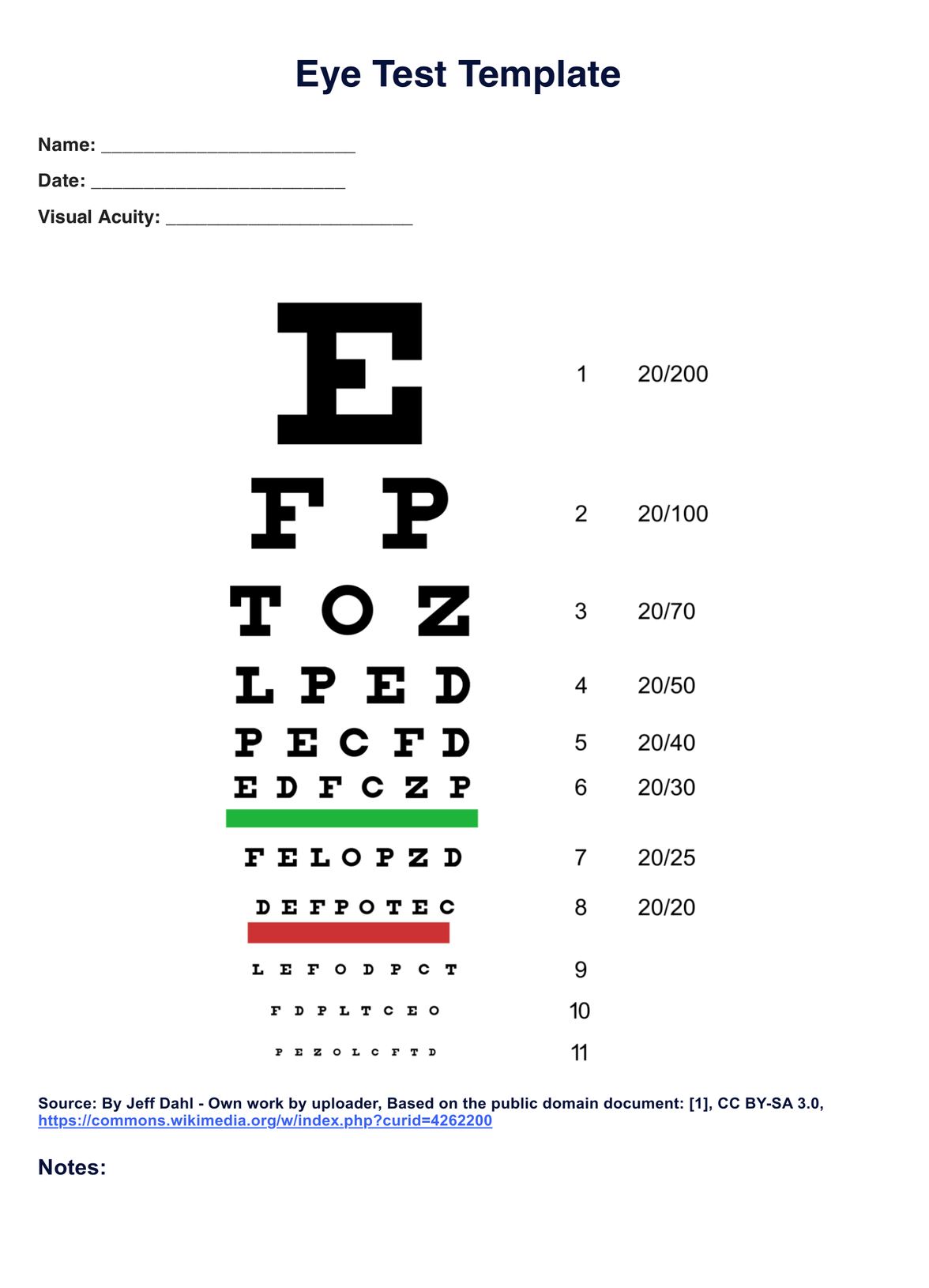An eye test, or vision screening, is a routine examination performed by an optometrist or ophthalmologist to assess your visual acuity and overall eye health. It involves reading an eye chart and may include tests for color vision, peripheral vision, and the ability to focus and coordinate the eyes.

Eye Test Chart Template
Discover our Eye Test Chart Template - perfect for optometrists, educators, and personal vision tracking. Enhance eye care communication and education
Eye Test Chart Template Template
Commonly asked questions
Adults should have an eye test every 1-2 years, but this frequency can vary depending on age, health history, and risk factors for eye diseases. Children should have regular eye screenings during developmental years as recommended by their healthcare provider.
20/20 vision is a term used to express normal visual acuity measured at a distance of 20 feet. If you have 20/20 vision, it means you can see what an average person can see on an eye chart when they are 20 feet away.
EHR and practice management software
Get started for free
*No credit card required
Free
$0/usd
Unlimited clients
Telehealth
1GB of storage
Client portal text
Automated billing and online payments











